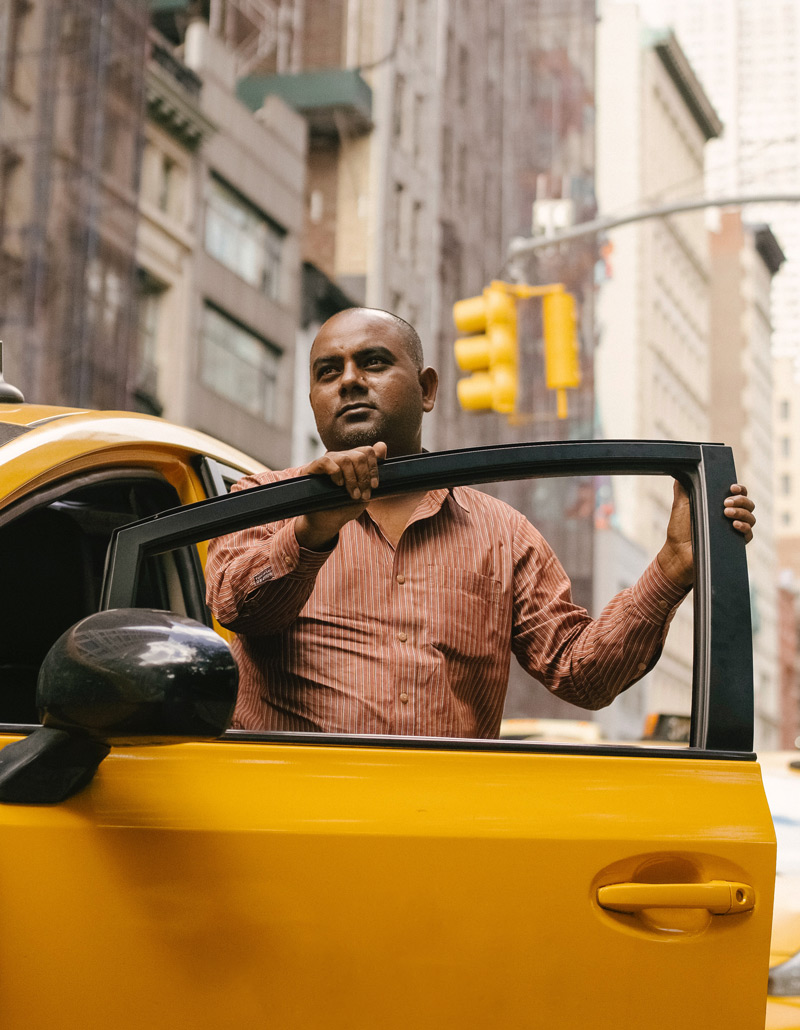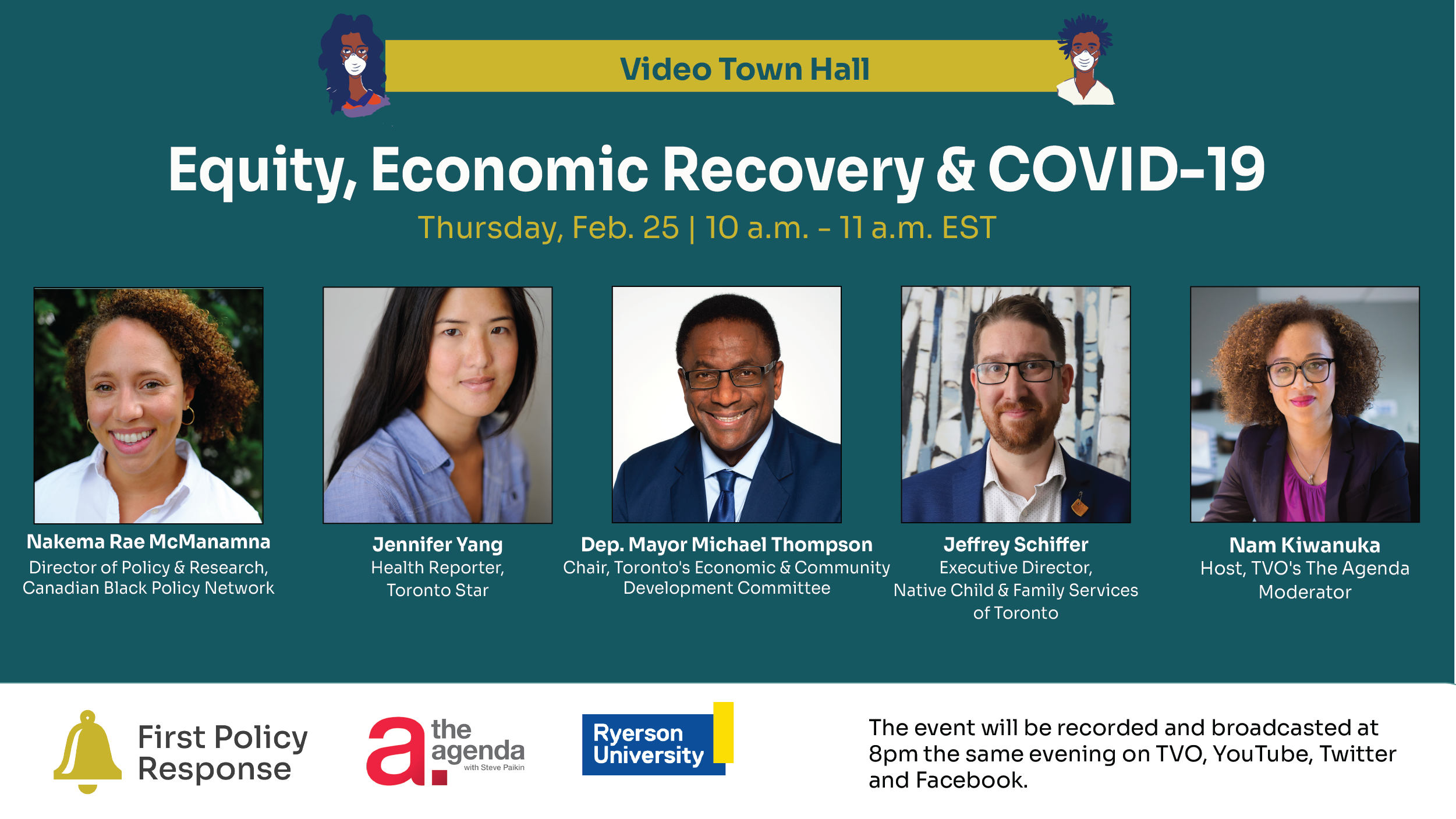Published as part of a collaboration between TVO.org and First Policy Response
Over the past year, the COVID-19 pandemic has had a profound impact, with more than 100 million cases and more than 2.4 million deaths worldwide. But despite what feels like the universal nature of the pandemic, not all of us have been affected equally.
After months of community advocacy, public-health officials, researchers, and policy-makers finally started to look at the impact of COVID-19 on racialized people. The results were striking, although sadly not surprising. In Toronto, by the end of December, it was reported that nearly 80 per cent of people with COVID-19 were racialized. To put that in perspective, only 52 per cent of Toronto’s population is racialized.
Racialized people in Ontario are at higher risk of COVID-19 because they are more likely to be “essential workers” who cannot work from home and less likely to be able to take paid sick leave, physically distance, or receive adequate protective equipment in the workplace. Our system’s response to the pandemic has too often ignored, trivialized, and been slow to protect these groups, leaving them at ever higher risk of infection.
We also have to ask about the why behind the why. Why are racialized people more likely to be in these precarious working and living situations? Because this is one of the many ways in which systemic, long-standing racism manifests. Racialized people are not genetically engineered to be precarious workers and did not end up on the lowest rungs of the social ladder by chance. Societal structures that play out in education, employment, housing, and other areas disproportionately push racialized people into these positions.
Racialized people in Ontario are at higher risk of COVID-19 because they are more likely to be “essential workers” who cannot work from home and less likely to be able to take paid sick leave, physically distance, or receive adequate protective equipment in the workplace.

So what can be done to address all this? In the short term, we need to take a hard look at the system response to the COVID-19 pandemic through an anti-racist and health-equity lens. An anti-racist system response requires specific policies and systems to explicitly protect and prioritize those who are marginalized and at higher risk of infection.
It will mean providing paid sick days for everyone and viewing affordable housing and food security as human rights. It will mean providing support to community organizations to lead COVID-19 testing and contact tracing. It will mean not blaming people’s genetics or culture for disproportionate COVID-19 rates. It will mean infrastructure to provide wrap-around care and social-service supports for those who test positive.
And, crucially, it will mean developing a community-based and community-led vaccine strategy that prioritizes those living and working in settings at higher risk of COVID-19. There are promising initiatives we can learn from. The Centre for Wise Practices in Indigenous Health, at Women’s College Hospital, is working in partnership with multiple other Indigenous-focused community and health-care organizations on Sharing Medicine, a project that will develop community-centred resources specifically tailored to Indigenous communities. Importantly, they are using a decolonial approach to understand and address vaccine concerns (and how they are related to colonial histories).
Examples such as this make it clear that taking a hard look at our current policies, systems, and plans from an anti-racist perspective cannot be done behind closed doors. Community leaders and advocates from racialized communities must be central voices in the response and be recognized as the experts that they are.
In the longer term, we need to take that anti-racist lens to all our social and public-health policies. Housing insecurity, food insecurity, job insecurity, precarious work, unsafe working conditions, and everyday racism will all still be with us after everyone has been vaccinated. The current pandemic is just one example of how these factors play out, but there are countless others.
We also need to increase representation of racialized people in positions of power and decision-making across all sectors. There has been focus on the over-representation of racialized people at the margins of our society in this pandemic, but the flipside of that is the under-representation at the centres of our society, including at the decision-making tables. A meaningful, sustainable increase in representation will require the involvement of all governmental sectors. How can we ensure that our racialized students are not streamlined away from career paths they’d be more than capable of pursuing? How can we ensure that racialized people have equal employment opportunities and receive equal pay?
The road that led us to where are now is centuries long. We cannot expect the solutions to be quick and easy. But we must choose — today — to take a different path.
Don't miss this event with TVO
Equity, Economic Recovery & COVID-19
February 25, 2021
Addressing the disproportionate impact of COVID-19 on low-income areas
Aisha Lofters is a family physician and researcher at Women’s College Hospital and the University of Toronto. She is the chair in implementation science at the Peter Gilgan Centre for Women’s Cancers in partnership with the Canadian Cancer Society.




